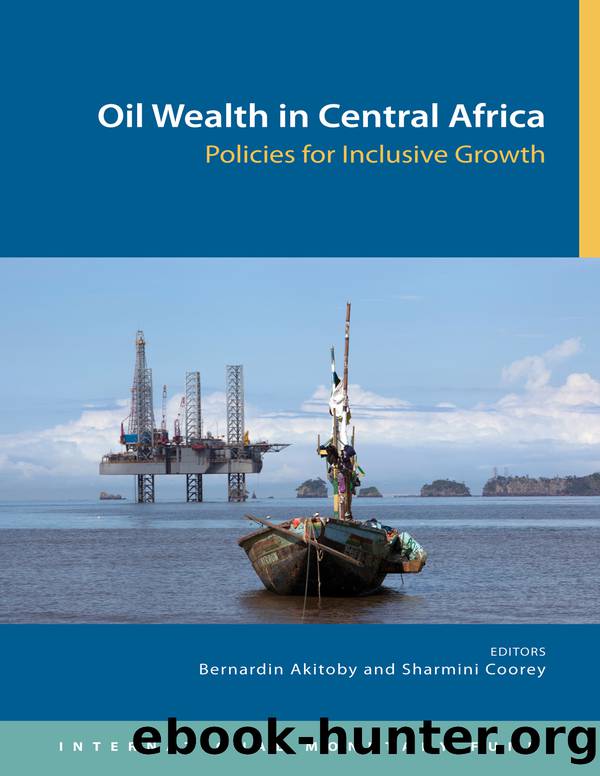Oil Wealth in Central Africa: Policies for Inclusive Growth by Bernardin Akitoby Sharmini Coorey

Author:Bernardin Akitoby, Sharmini Coorey
Language: eng
Format: epub
ISBN: 9781475549126
Publisher: Washington
Published: 2012-08-15T00:00:00+00:00
Ineffective Allocation of Public Resources
In addition to mismanaging the aggregate levels of public spending out of oil revenue, these countries have misallocated resources across different uses. The discretion allowed by opaque public expenditure management practices and the need to deal with various demands from fragmented political constituencies have led to striking discrepancies between stated development objectives and actual executed public spending. Two cases in point are Cameroon and Chad.
In Cameroon, budget discipline has not always been strong, contributing to poor practices in budget preparation and execution, and allowing political interference in the budget process. Overall, poor planning and preparation of the budget, and the lack of broad participation by line ministries in the process, has lead to weak ownership and acceptance of the budget. Despite multiple controls in budget execution, the controllers are neither empowered to do their jobs without outside interference nor held accountable, further reducing the efficiency of budget execution.
The social sectors, health and education in particular, along with agriculture and infrastructure, appear to constitute the pillars of the governmentâs investment strategy. The share of these four key sectors in the investment budget increased from about 42 percent in 2004 to about 68 percent in 2008. This expansion was driven mainly by the infrastructure sector, whose share more than doubled during these four years (from less than 20 percent in 2004 to more than 40 percent in 2008).
However, these priority sectors represented a much smaller share of the treasuryâs actual payments, declining from about 44 percent in 2006 to about 30 percent in 2008 (Figure 6.7 and 6.8). This decrease may reflect the difficulty of implementing projects in key sectors or a shift in the governmentâs priorities between the planning and payment stages. The infrastructure sector again saw the biggest changes: it represented 45 percent of the planned investment outlays in 2008, but only 19 percent of the payments. None of the governmentâs priority sectors differed from this pattern.
Figure 6.7 Budget Allocation to Priority Sectors in Cameroon, 2004â08
Download
This site does not store any files on its server. We only index and link to content provided by other sites. Please contact the content providers to delete copyright contents if any and email us, we'll remove relevant links or contents immediately.
Adding Value to Policy Analysis and Advice by Claudia Scott; Karen Baehler(453)
Sociological Perspectives of Health and Illness by Constantinos N. Phellas(444)
Race and American Political Development by unknow(441)
American Government and Politics Today by Steffen W. Schmidt Mack C. Shelley Barbara A. Bardes(424)
Human and Global Security : An Exploration of Terms by Peter Stoett(423)
Control Of Oil - Hardback by Kayal(407)
Entrepreneurship Education and Training: The Issue of Effectiveness by Colette Henry Frances Hill Claire Leitch(362)
The Catholic Church and European State Formation, AD 1000-1500 by Jørgen Møller(355)
Materializing the Middle Passage by Jane Webster;(348)
The World According to China by Elizabeth C. Economy(343)
Left Is Not Woke by Susan Neiman(328)
Theories of Counseling and Psychotherapy: A Case Approach by Nancy L. Murdock(313)
Turkey's Relations with the West and the Turkic Republics: The Rise and Fall of the Turkish Model by Idris Bal(312)
Cross-Cultural Child Development for Social Workers by Lena Robinson(305)
Japan's Ainu Minority in Tokyo by Mark K. Watson(297)
Advances in Child Development and Behavior, Volume 37 by Patricia J. Bauer(295)
Laboratory Life by Bruno Latour(294)
Beyond Service: State Workers, Public Policy, and the Prospects for Democratic Administration by Greg McElligott(284)
The Oxford Handbook of Museum Archaeology by Stevenson Alice;(275)
